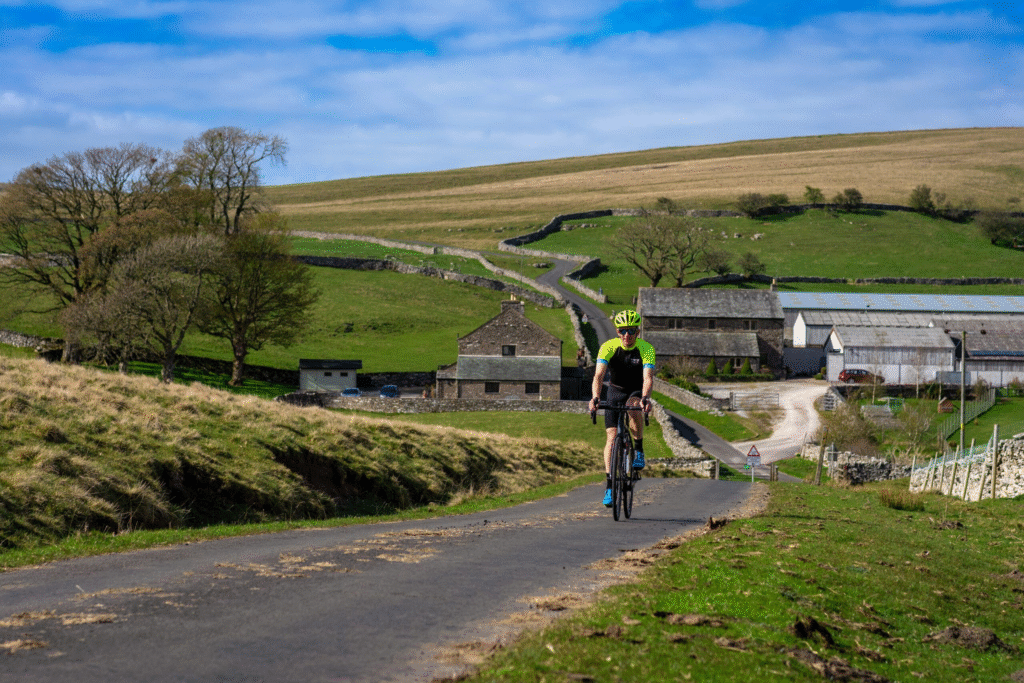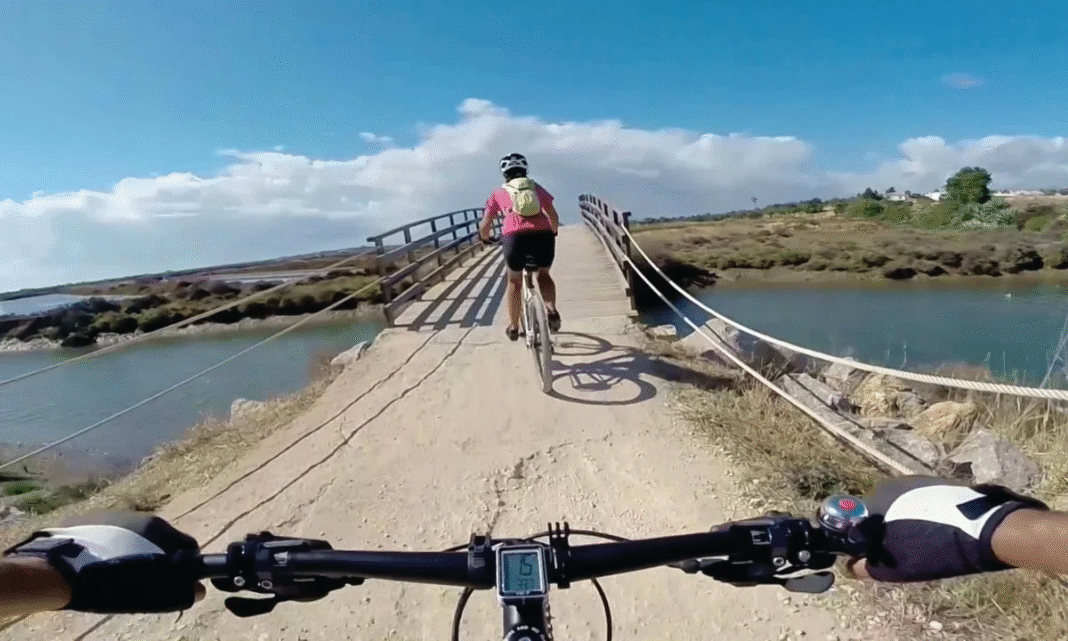Something remarkable is happening on British roads and footpaths.UK Cycling Adventures is no longer a solitary activity or a Sunday-morning ritual. It has now become a social culture, a welfare movement, and a national migration plan. The excitement of cycling is increasing rapidly in Britain. It’s not just for Lycra riders anymore. Young people, families, and travelers are all getting involved. Even digital nomads with folding bikes are joining in on the fun. The result is a new definition of freedom, one that evokes the scent of wet tarmac, pine forests, and instant coffee brewed over a saddlebag stove.
How Britain fell back in love with the ride

Cycling has always been a part of the British identity. From penny-farthing pioneers to Tour de France heroes, bikes are woven into our cultural memory. Yet for years, they remained in the background in the shadows of cars, trains, and convenience.
Then the world changed. During the pandemic, bikes became passports to sanity. People rediscovered local streets, canal paths, and hidden green corridors. When the world opened up again, they didn’t stop. They wanted more and more distance, more exploration, more story. That reinvention ignited the current wave of UK cycling adventures, reshaping the way we think about travel and fitness.
The rise of the hidden route

In Britain, there are many famous cycling destinations, the Lake District, the Highlands, and the Yorkshire Dales. The real charm lies in hidden lanes, the quiet back roads, and those that wind through fields and forests. These hidden passages feel personal, like old memories that only the locals know about. Riders share them via chat, maps, or sunrise clips on Instagram or TikTok. The stunning sea views you won’t see in guidebooks. In Cornwall, narrow lanes filled with wild flowers lead to cliffs. District’s old railway tracks now link cobbled villages and warm cafes in the Peak. Farther north, the roads near Bamburgh Castle challenge your legs and reward you with breathtaking views. These places are the new epicenter of UK cycling, everyday landscapes reinvented on two wheels.
The cultural shift: bikes as lifestyle, not hobby

UK Cycling used to be an expensive gear-exclusive hobby, with long distances, intimidating clubs. That’s changing the new wave of British. Riders aren’t chasing wattage charts. They are chasing moments. They make rides for sunrise photos, mental clarity, or mid-ride coffee stops feel like mini vacations. Social media helped turn the narrative. Hashtag culture normalized beginner rides, second-hand bikes, and imperfect gear. What matters now is the story, not the pace.
Even the way cyclists dress has evolved. The technical kit now meets streetwear commuter jackets that look sharp off the bike, trainers designed equally for pedals and pavement. Brands have turned UK cycling adventures into both a fashion statement and a mindfulness practice.
Gen Z and the new cycling identity

Gen Z riders are redefining the sport. They value community, stability, and experience over competition. Instead of joining clubs, they form pop-up riding collectives. They blend cycling with content creation, environmental activism, and digital storytelling.UK Cycling Adventures are not about endurance, they’re about expression.
When the outdoors became a lifeline, many young cyclists grew up during lockdown. They associate the bikes with freedom and connection rather than structure. TikTok and YouTube cycling channels speak their own language, short films about friendships, landscapes, and life lessons learned on two wheels. It’s less about Strava trophies and more about mental health checks between rides.
How technology powers the movement

Apps, GPS, and mapping tools have turned navigation into an adventure game. Cyclists now create routes from community data and discover routes that have never been shown in any printed map. E-bikes are also changing the demographic. They’re leveling the hills, opening up countryside trails to people who’d never thought of cycling before. The inclusivity of e-cycling has expanded the meaning of UK cycling. Adventures are no longer limited by age, distance, or athletic background.
Bike-packing gear has become light and elegant. Solar chargers, roll-top panniers, collapsible tents, and they’re all part of the new mobile ecosystem. This technological communication has made multi-day trips possible not only for hardened explorers but also for ordinary people.
The social side of the saddle

Cafe stops have become cultural destinations. In the Cotswolds, converted barns serve espresso and flapjacks to riders covered in rain and glory. In Scotland, roadside stands offer both warmth and stories between strangers. This camaraderie defines modern UK cycling adventures. Riders swap tire tips, lend pumps, and post photos of each other’s bikes online with affectionate captions. The sense of belonging runs deep and is a calming antidote to the loneliness of digital life.
The environmental mindset

Cycling also fits into the national mood of sustainability. As Britain turns its attention to the environment, pedal power feels like both rebellion and responsibility. Choosing the ride is to reduce emissions, support the local economies, and rediscover the natural geography of the islands on which we live. Rural tourism boards now promote bicycle-friendly villages. While city councils expand bike lanes and low-traffic areas. Ultimately, the infrastructure feels aligned with the cultural energy behind UK Cycling Adventures.
Future of UK Cycling Adventures

The next phase looks even brighter. Adventure companies are packaging exclusive cycling experiences that combine sport, gastronomy, and heritage. Think Yorkshire cheese trails by bike or Scottish whiskey rides in the Highlands. Bicycle-friendly housing is expanding rapidly. Even train operators are improving carriage space for bikes. The dream of spontaneous weekend exploration, a short train ride, a hidden passage, and a night in a small inn is becoming a reality for more people every month.
Urban cycling is also entering a creative era. Gravel bikes slide across parkland. Fixies share lanes with cargo bikes. Night rides light up the Thames Path. The diversity of types of cycling reflects the variety of the riders themselves.
Final thoughts
Bikes have always been a symbol of freedom, but today that freedom feels shared and democratic. UK Cycling Adventures represents much more than sport; They symbolize cultural recovery, reconnection with the land, and a new collective rhythm. They remind us that Britain’s best views aren’t locked behind paywalls or flight tickets. They’re waiting at the end of a quiet lane.
Every paddle highlight tells a little story. Together, they create a national narrative of reinvention. That’s why UK cycling adventures are more exciting than ever.
FAQs
1. Question: What makes UK Cycling Adventures unique?
Answer: They combine culture, scenery, and accessibility. The variety of terrain, from coastal trails to pristine byways, keeps every ride fresh.
2. Question: Do I want an expensive bike?
Answer: No need for an expensive bike, Hybrid bikes are reliable for roads, gravel, or are sufficient for most routes. Comfort matters better than cost.
3. Question: How can beginners find hidden passages?
Answer: Join local cycling groups on Strava or Komoot. Many riders share their GPX files publicly for free exploration.
4. Question: Are UK Cycling Adventures safe for solo riders?
Answer: Yes, with planning. Stick to known routes, carry lights, check weather updates, and have someone tell you your route.
5. Question: Which season is best for searching?
Answer: Spring and fall have milder weather and fewer crowds, but each season brings its own charm, from the brightness of summer to the solitude of winter.
